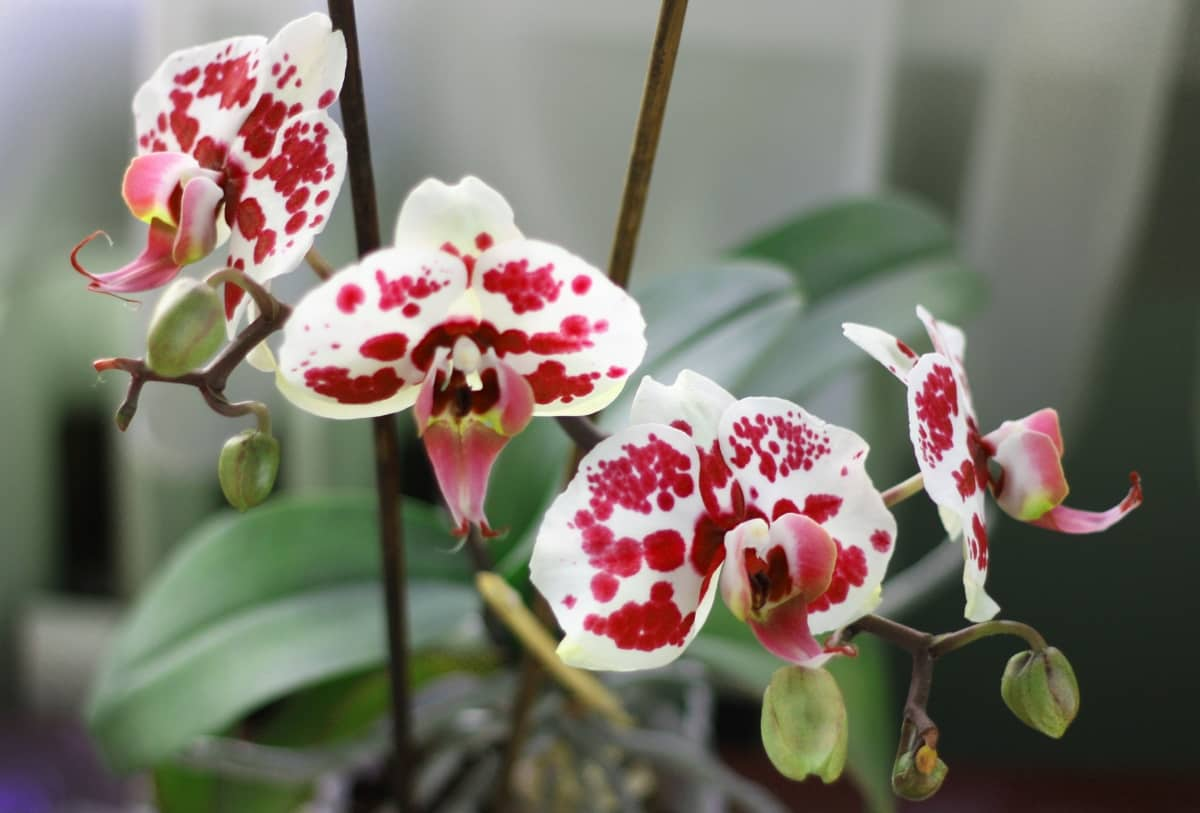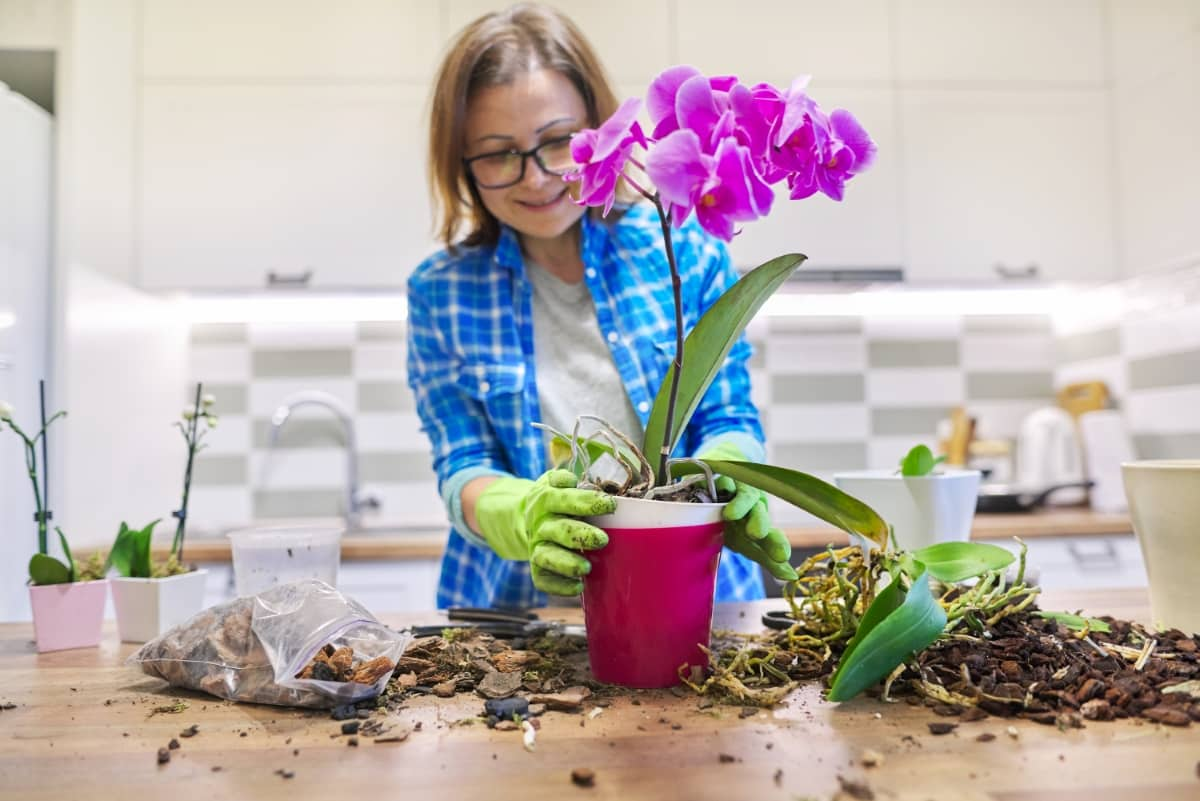Orchids, with their exquisite blooms and vibrant colors, have captured the admiration of plant enthusiasts worldwide. Despite their reputation for being difficult to grow, anyone can successfully cultivate orchids indoors with the correct knowledge and understanding.

This guide will cover essential topics, including the best indoor orchid care tips for beginners, proper watering techniques, understanding humidity and temperature control, selecting the right potting mix, essential indoor lighting requirements, pest prevention and treatment, fertilization needs, repotting guidelines, and maintaining proper air circulation. By sticking to these guidelines, you can ensure the thriving growth of your indoor orchid plants, allowing you to enjoy their magnificent blossoms consistently over the years.
How to Grow and Care for Orchid Plants Indoors
Best Indoor Orchid Care Tips for Beginners
Orchids represent a wide range of flowering plants characterized by distinct requirements. The first step to successful orchid care is understanding the specific requirements of your orchid type. A Phalaenopsis orchid, for example, requires different care than a Cymbidium orchid. Ensure sufficient lighting for your orchids, avoiding direct sunlight to prevent leaf damage.
The leaves should be a light green – dark green leaves often indicate that the plant isn’t receiving enough light. Watering should be done sparingly; orchids are more likely to survive under-watering than over-watering. Lastly, maintain a humid environment, feed them appropriately with a suitable fertilizer, and provide good air circulation.
Step-By-Step Guide to Caring for Orchids Indoors
Orchid care begins with choosing the right orchid. Choose a healthy plant with bright, firm leaves and plenty of unopened buds. After bringing your orchid home, place it in a spot with bright, indirect light, ideally an east or west-facing window. Next, consider the watering schedule.
Orchids typically thrive when allowed to slightly dry out between watering sessions. To ensure their optimal growth, it is generally recommended to water them once per week during the winter and increase the frequency to twice per week during the summer. However, remember that your plant’s needs may vary depending on the specific orchid type and its growing environment.
Proper Watering Techniques for Indoor Orchid Plants
Orchids are prone to root rot if over-watered. A common mistake is watering too frequently or not allowing the water to drain properly. To water your orchid effectively, use lukewarm water and thoroughly soak the potting mix. After watering, ensure all excess water drains out of the pot. If you’re unsure when to water, check the potting mix with your finger – if it feels dry, it’s time to water. Another method is to check the roots’ color; healthy Phalaenopsis roots are silver when dry and green when wet.
Humidity and Temperature Control for Indoor Orchids
Orchids thrive in environments with 40-60% humidity. When indoor humidity often drops in winter, consider using a humidity tray or a humidifier to provide additional moisture. Keep orchids away from drafty windows, air conditioners, and heaters to prevent rapid temperature changes. Orchids usually prefer temperatures between 60-75 degrees Fahrenheit, but some varieties can tolerate more extreme conditions. Nighttime temperatures should be slightly lower than daytime temperatures to mimic the orchids’ natural environment.
Choosing the Right Potting Mix for Indoor Orchids
The right potting mix is crucial for healthy orchids. Traditional potting soil is too dense for orchids; they need a lighter mix for plenty of air circulation. Most orchids thrive in bark chips, sphagnum moss, and perlite. Different orchid varieties have different requirements, so tailor your potting mix to your orchid’s needs. Regularly repot your orchids every two years, or more frequently if the potting mix deteriorates, to safeguard against root rot and promote optimal growth.
Essential Indoor Lighting Requirements for Orchid Plants
Light is a critical factor in growing healthy orchids. They generally need bright, indirect light, but the specific amount can vary by species. An east or west-facing window is often ideal, providing plenty of light without the harsh afternoon sun. The color of the orchid’s leaves can give you a clue about the light levels. Deep green leaves often indicate insufficient light, while light green or yellow leaves may suggest too much light. Some orchids, such as Cattleyas and Dendrobiums, enjoy brighter light, while others, like Phalaenopsis, prefer more shaded conditions.
In case you missed it: 7 Causes of Dying Orchids and How to Fix Them?

Preventing and Treating Common Pests in Indoor Orchids
Pests can be a significant concern for indoor orchid growers. Common pests include mealybugs, scale, spider mites, and aphids. Regular inspection of your plants is vital to catching an infestation early. Treat affected plants immediately by removing the pests manually or using a mild insecticidal soap. For severe infestations, a systemic insecticide may be necessary. Additionally, ensure good air circulation and avoid over-watering as these can create conditions favorable for pests.
Understanding Fertilization Needs for Indoor Orchid Care
Fertilization is an essential part of orchid care. Orchids need a balanced, water-soluble fertilizer to support growth and blooming. A common recommendation is the ‘weakly, weekly’ approach, where a diluted fertilizer is applied once a week. A higher nitrogen fertilizer can promote growth during the growing season, while a high-phosphorus fertilizer can support blooming. However, different orchid types may have specific nutrient requirements, so always tailor your fertilization strategy to your particular plant’s needs.
Repotting Indoor Orchids: When and How to Do It
Repotting is an essential part of indoor orchid care. It is advisable to transplant your orchids every two years or whenever the potting medium deteriorates. To repot, carefully remove the orchid from its pot, trim away any dead or rotten roots, and then place the orchid in a new pot with fresh potting mix. Be sure not to bury the orchid’s crown in the potting mix, which can cause rot. After repotting, wait a week before watering to allow any damaged roots to heal.
Maintaining Proper Air Circulation for Healthy Indoor Orchids
Air circulation is vital for indoor orchids. It helps to regulate temperature, prevent disease, and supports the plant’s overall health. Place your orchids where they receive gentle air movements, such as near a fan or an open window. However, avoid placing orchids in drafty areas or near heating or cooling vents, as sudden changes in temperature can be harmful.
In case you missed it: How to Grow Orchids in a Greenhouse: A Step-By-Step Guide for Seed to Harvest

Conclusion
Although orchids may require more care and attention than other houseplants, the effort is worthwhile. With their graceful blooms and striking colors, orchids can bring tropical beauty to any indoor space. Following these guidelines, even a beginner can grow and care for these enchanting plants.
- Feed Your Flock for Less: Top 10 Tips to Save on Chicken Feed
- Ultimate Guide to Ossabaw Island Hog: Breeding, Raising, Diet, and Care
- Hatching Answers: The Top 10 Reasons Your Chickens Aren’t Laying Eggs
- Eggs and Economics: Breaking Down the Cost of Raising Backyard Chickens
- Defend Your Greens: Proven Methods to Keep Iguanas Out of Your Garden
- Ultimate Guide to Cinnamon Queen Chicken: A Comprehensive Guide for Beginners
- Ultimate Guide to California Tan Chicken: Breeding, Raising, Diet, Egg-Production and Care
- Ultimate Guide to Marsh Daisy Chicken: Breeding, Raising, Diet, and Care
- 10 Types of Chicken Farming Businesses You Can Start for Profits